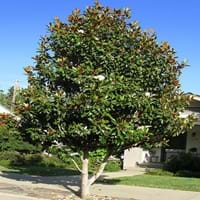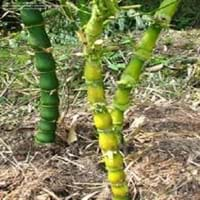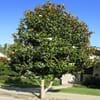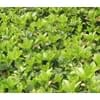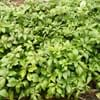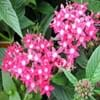Life Span
Perennial
Perennial
Type
Broadleaf Evergreen
Grass
Origin
Southeastern United States
China, Japan
Types
Not available
Slender Weavers Bamboo, Golden Buddha's Belly Bamboo, Painted Bamboo
Number of Varieties
Not Available
Habitat
marshes, Marshy ground, Swamps
Subtropical climates, Subtropical forests
USDA Hardiness Zone
6-10
9-11
AHS Heat Zone
Not Available
12 - 9
Sunset Zone
21,22
H1, 18, 19, 20, 21, 22, 23, 24
Habit
Pyramidal
Clump-Forming
Flower Color Modifier
Bicolor
Bicolor
Leaf Color in Spring
Dark Green
Dark Green
Leaf Color in Summer
Dark Green
Light Green
Leaf Color in Fall
Dark Green
Dark Green
Leaf Color in Winter
Dark Green
Dark Green
Leaf Shape
Pyramidal
Linear
Plant Season
Spring, Summer, Fall, Winter
Spring, Summer, Fall, Winter
Sunlight
Full Sun, Partial Sun
Full Sun, Partial Sun, Partial shade
Type of Soil
Clay, Loam, Sand
Clay, Loam, Sand
The pH of Soil
Acidic, Neutral
Acidic, Neutral, Alkaline
Soil Drainage
Well drained
Average
Bloom Time
Early Spring, Spring, Late Spring, Early Summer, Summer, Late Summer
Not Available
Tolerances
Pollution, Drought
Not Available
Where to Plant?
Ground, Pot
Container, Ground
How to Plant?
Layering, Semi-ripe cuttings, Softwood cuttings
Divison
Plant Maintenance
Low
Medium
Watering Requirements
Provide sufficient water to saturate the root zone, Requires regular watering, Water when soil is dry
Allow to dry out slightly between watering, Needs 2-3 times watering per week, Requires watering in the growing season, Water Deeply, Water when soil is dry
In Summer
Less Watering
Lots of watering
In Spring
Drought Tolerant
Moderate
In Winter
Average Water
Less Watering
Soil pH
Acidic, Neutral
Acidic, Neutral, Alkaline
Soil Type
Clay, Loam, Sand
Clay, Loam, Sand
Soil Drainage Capacity
Well drained
Average
Sun Exposure
Full Sun, Partial Sun
Full Sun, Partial Sun, Partial shade
Pruning
Remove damaged leaves, Remove dead branches, Remove dead leaves
Cut the culms, Remove damaged leaves, Remove dead branches, Remove dead leaves, Remove dead or diseased plant parts
Fertilizers
All-Purpose Liquid Fertilizer
All-Purpose Liquid Fertilizer, fertilize in growing season
Pests and Diseases
Birds, Squirrels
Red blotch
Plant Tolerance
Drought
Not Available
Flower Petal Number
Single
Single
Foliage Texture
Coarse
Medium
Foliage Sheen
Glossy
Matte
Attracts
Birds, Rabbits, Squirrels
Butterflies, Mites
Allergy
allergic reaction, Asthma, Runny nose
Pollen, Rash
Aesthetic Uses
Beautification, Cottage Garden, Landscape Designing, Showy Purposes
Bonsai
Beauty Benefits
Anti-ageing, Beautiful Skin, Blood purifying, Treatment of Dark Spots
Good for skin and hair, Not Available
Environmental Uses
Air purification
Air purification
Medicinal Uses
Alzheimer’s Disease, anti-cancer, Anxiety, Asthma, Diabetes, Liver problems, Menstrual Cramps
Healthy teeth, Pain in gums
Part of Plant Used
Flowers
Sap, Stem
Other Uses
Air freshner, Grown for shade
Container, Espalier, Screen, Used in paper industry
Used As Indoor Plant
Yes
Insignificant
Used As Outdoor Plant
Yes
Yes
Garden Design
Container, Feature Plant, Landscape, Shade Trees, Street Trees
Container, Feature Plant, Screening / Wind Break, Topiary / Bonsai / Espalier, Tropical
Botanical Name
MAGNOLIA grandiflora
BAMBUSA ventricosa
Common Name
Magnolia grandiflora, bull bay
Buddha's Belly Bamboo, Clumping Bamboo, Ventricose Bamboo
In Hindi
Magnolia grandiflora
बुद्ध के पेट बांस
In German
Immergrüne Magnolie
Buddhas Bauch Bambus
In French
Magnolia à grandes fleurs
Le Bamboo Belly de Bouddha
In Spanish
Magnolia grandiflora
De bambú del vientre de Buda
In Greek
Magnolia grandiflora
Κοιλιά Μπαμπού Βούδα
In Portuguese
Magnólia-branca
Bamboo barriga de Buda
In Polish
Magnolia wielkokwiatowa
Buddy Belly Bamboo
In Latin
Magnolia grandiflora
Buddha ventre Bamboo
Phylum
Magnoliophyta
Magnoliophyta
Class
Magnoliopsida
Liliopsida
Family
Magnoliaceae
Poaceae
Clade
Angiosperms, Magnoliids
Angiosperms, Commelinids, Monocots
Tribe
Not Available
Bambuseae
Subfamily
Magnolioideae
Bambusoideae
Number of Species
Not Available
Importance of Southern Magnolia and Buddha's Belly Bamboo
Want to have the most appropriate plant for your garden? You might want to know the importance of Southern Magnolia and Buddha's Belly Bamboo. Basically, these two plants vary in many aspects. Compare Southern Magnolia and Buddha's Belly Bamboo as they differ in many characteristics such as their life, care, benefits, facts, etc. Every gardener must at least have the slightest clue about the plants he wants to plant in his garden. Compare their benefits, which differ in many ways like facts and uses. The medicinal use of Southern Magnolia is Alzheimer’s Disease, anti-cancer, Anxiety, Asthma, Diabetes, Liver problems and Menstrual Cramps whereas of Buddha's Belly Bamboo is Healthy teeth and Pain in gums. Southern Magnolia has beauty benefits as follows: Anti-ageing, Beautiful Skin, Blood purifying and Treatment of Dark Spots while Buddha's Belly Bamboo has beauty benefits as follows: Anti-ageing, Beautiful Skin, Blood purifying and Treatment of Dark Spots.
Compare Facts of Southern Magnolia vs Buddha's Belly Bamboo
How to choose the best garden plant for your garden depending upon its facts? Here garden plant comparison will help you to solve this query. Compare the facts of Southern Magnolia vs Buddha's Belly Bamboo and know which one to choose. As garden plants have benefits and other uses, allergy is also a major drawback of plants for some people. Allergic reactions of Southern Magnolia are allergic reaction, Asthma and Runny nose whereas of Buddha's Belly Bamboo have Pollen and Rash respectively. Having a fruit bearing plant in your garden can be a plus point of your garden. Southern Magnolia has showy fruits and Buddha's Belly Bamboo has no showy fruits. Also Southern Magnolia is not flowering and Buddha's Belly Bamboo is not flowering . You can compare Southern Magnolia and Buddha's Belly Bamboo facts and facts of other plants too.
